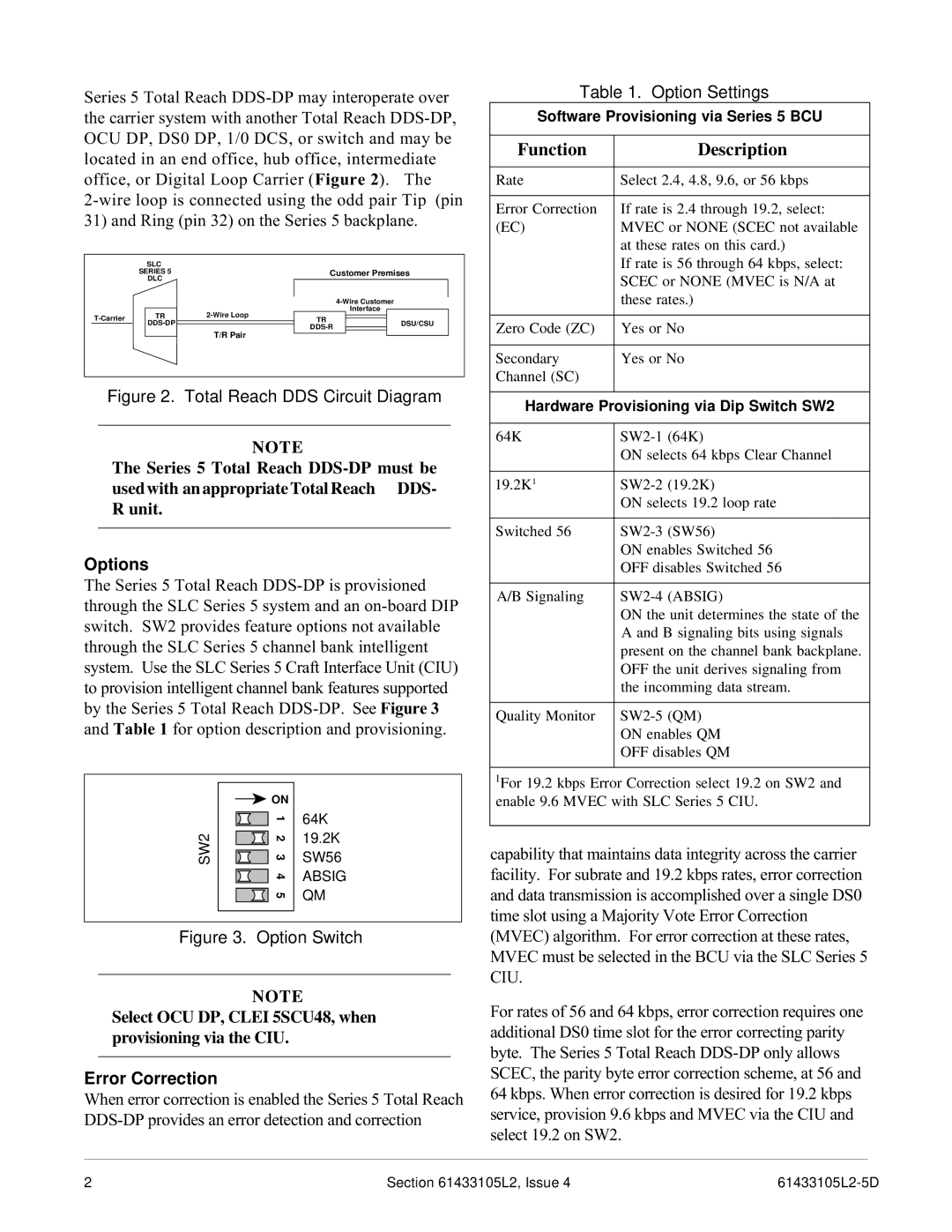DDS-DP specifications
ADTRAN DDS-DP, or Digital Data Services-Digital Processor, is a robust network access solution designed to deliver high-performance data connectivity. Employed primarily in telecommunications, DDS-DP provides businesses with a reliable means of transmitting digital data over traditional copper infrastructure. This versatile technology is essential for organizations that require uninterrupted access to critical information and communication networks.One of the primary features of ADTRAN DDS-DP is its ability to support multiple data rates, enabling organizations to choose the speed that best suits their operational requirements. With standard data rates typically ranging from 56 Kbps to 1.544 Mbps, DDS-DP caters to a variety of applications including point-of-sale systems, polling and monitoring services, and data gathering for remote installations. This flexibility makes it a go-to option for businesses across different verticals.
The technology behind DDS-DP incorporates advanced modulation techniques that allow efficient transmission over existing copper lines. By leveraging the capabilities of Digital Subscriber Line (DSL) technology and Time Division Multiplexing (TDM), DDS-DP ensures a seamless flow of data, while minimizing latency and maintaining quality of service. This aspect is particularly crucial for businesses that rely heavily on real-time data communication, such as financial institutions or healthcare facilities.
ADTRAN DDS-DP also includes robust error correction features, enhancing data integrity during transmission. By employing techniques such as Forward Error Correction (FEC), the system can detect and correct errors on-the-fly, which is vital for maintaining communication reliability. The system is designed to operate in various environments, whether in a central office or distributed remote locations.
Another key characteristic of DDS-DP is its backward compatibility with existing systems, allowing organizations to upgrade without a complete overhaul of their infrastructure. This ensures that businesses can continue to utilize their current hardware while benefiting from enhanced performance and capabilities.
Furthermore, ADTRAN's commitment to customer support and ongoing software updates facilitates the long-term viability of DDS-DP, allowing businesses to adapt to changing demands and technological advancements over time. In summary, ADTRAN DDS-DP stands out as a resilient and adaptable solution for organizations seeking to optimize their digital communication strategy, making it an essential component of modern data networks.

